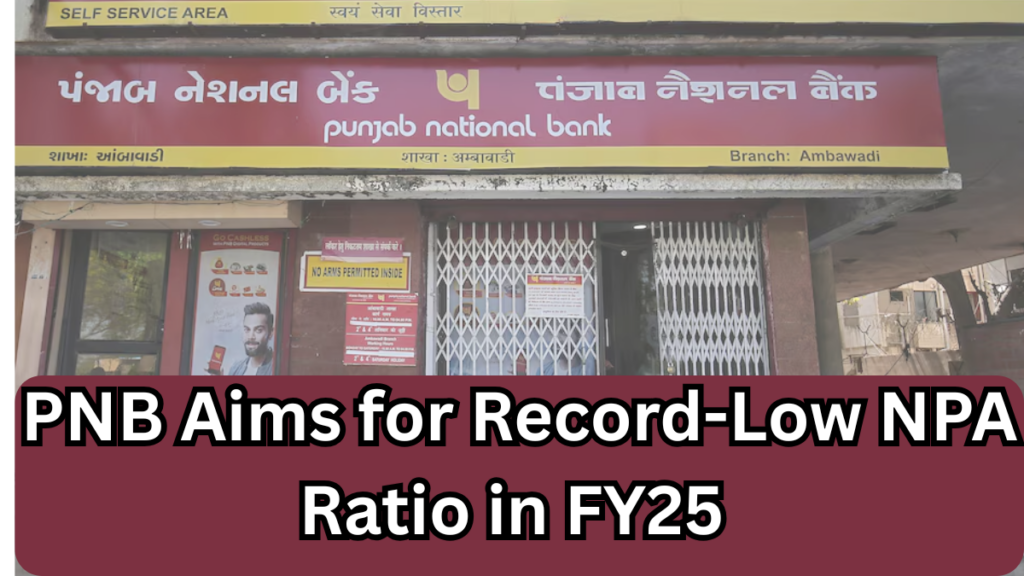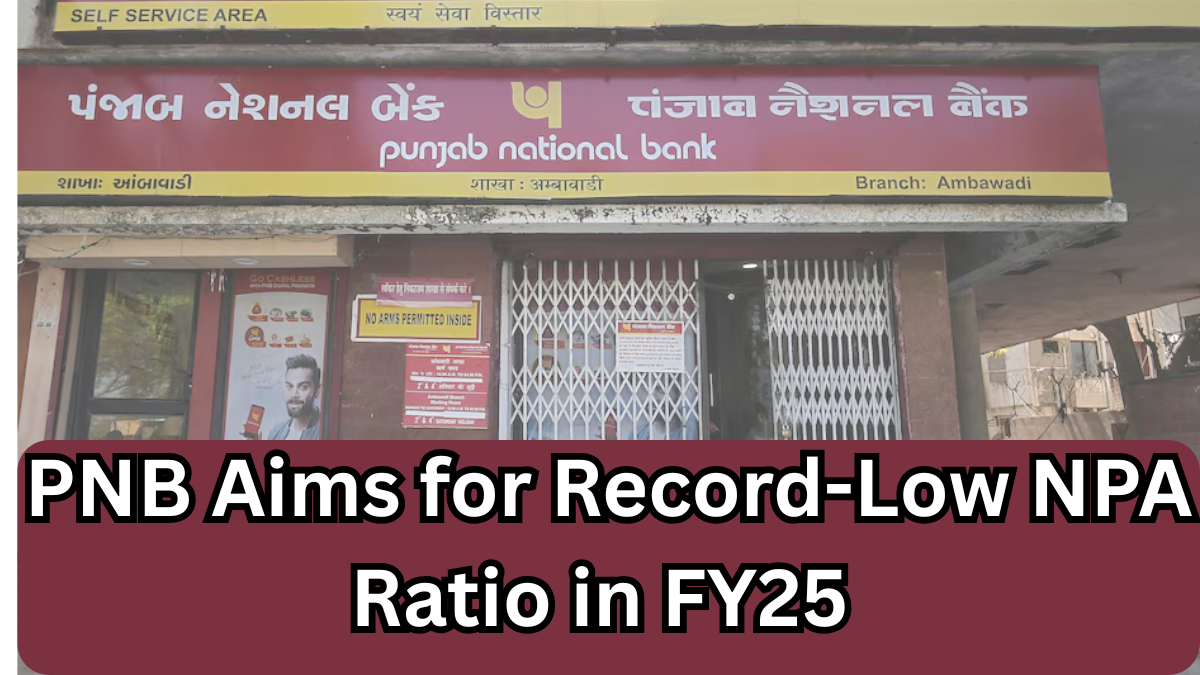Punjab National Bank (PNB), one of India’s most prominent public sector lenders, is on a mission to clean up its balance sheet. The bank has announced plans to bring down its Gross Non-Performing Asset (GNPA) ratio to below 6% by the end of the current fiscal year, a target that, if achieved, would mark its lowest bad loan ratio ever.
The move reflects PNB’s renewed focus on credit quality, aggressive loan recovery efforts, and a healthier outlook for India’s banking sector overall.

CEO’s Vision: A Focused Push for Asset Quality
In a recent interview, PNB’s Managing Director and CEO, Atul Kumar Goel, expressed confidence in the bank’s ability to reach this ambitious target. He attributed the progress to a multi-channel strategy for loan recovery, including:
-
Enhanced resolutions under the National Company Law Tribunal (NCLT)
-
Timely one-time settlements (OTS) with borrowers
-
Strategic sale of stressed assets to external agencies
According to Goel, PNB is targeting debt recoveries worth ₹22,000 crore (approx. $2.64 billion) in the fiscal year 2024–25. This marks a substantial improvement over the ₹19,832 crore recovered in FY 2023–24.
CEO’s Statement:
“We are focusing on all three fronts—NCLT resolutions, one-time settlements, and sale of bad loans. With that, we are confident of bringing down the GNPA below 6%.”
Recovery Strategies Driving the Turnaround
PNB is leveraging a combination of legal, financial, and market-based strategies to enhance recoveries. Here’s how each channel contributes to the overall recovery process:
| Recovery Strategy | Approach |
|---|---|
| NCLT Resolutions | Resolving large defaulter cases under India’s Insolvency and Bankruptcy Code |
| One-Time Settlements (OTS) | Negotiating reduced repayment terms with defaulting borrowers |
| Sale of Bad Loans | Selling stressed assets to Asset Reconstruction Companies (ARCs) |
This integrated approach is aimed not just at reducing legacy bad loans, but also at freeing up capital for fresh lending and growth.
Financial Snapshot: Then and Now
To understand the impact of this strategy, let’s take a look at PNB’s recent performance and their targets for the current fiscal:
| Financial Metric | FY 2023–24 (Actual) | FY 2024–25 (Target) |
|---|---|---|
| Gross NPA Ratio | 6.24% | Below 6% |
| Net NPA Ratio | 0.99% | Maintain or reduce |
| Loan Recoveries from Bad Assets | ₹19,832 crore | ₹22,000 crore |
| Capital Adequacy Ratio (CAR) | 15.5% | Above 15% |
The bank is also committed to ensuring minimal fresh slippages by reinforcing its credit risk assessment practices and tightening due diligence on new loans.
Why This Move Matters: Implications for the Economy
PNB’s aim to achieve a sub-6% GNPA ratio is significant not just for the bank, but for the broader Indian economy. Here’s why this development is crucial:
-
Investor Sentiment: Lower bad loans reflect stronger financial performance, which can attract more domestic and international investors.
-
Public Confidence: Improved credit quality strengthens the trust of depositors and retail customers.
-
Economic Growth: Cleaner balance sheets allow banks to lend more freely to businesses, supporting entrepreneurship and job creation.
-
Sectoral Health: The move also signals that public-sector banks are making progress in dealing with legacy NPAs, a long-standing issue in Indian banking.
Forward Outlook: Staying Cautious While Expanding
While recovery is on the rise, PNB is also planning to moderate its lending growth slightly to maintain asset quality. The bank will be cautious in sectors prone to defaults and will continue to align with RBI guidelines on provisioning and capital adequacy.
This prudent mix of aggression in recovery and caution in lending could become a model for other public-sector banks looking to clean up their books in a sustainable way.
Frequently Asked Questions (FAQs)
1. What is Gross NPA (GNPA), and why is it important?
Gross NPA refers to the total value of loans that have turned non-performing, meaning the borrower has stopped making repayments for 90 days or more. A lower GNPA indicates healthier financials and better risk management by the bank.
2. How does PNB recover bad loans through NCLT?
The National Company Law Tribunal (NCLT) allows banks like PNB to resolve large default cases under the Insolvency and Bankruptcy Code. Through this legal mechanism, the bank can recover dues by selling the borrower’s assets or restructuring debt.
3. What is a One-Time Settlement (OTS)?
An OTS is a compromise between the borrower and the bank, where the borrower agrees to pay a part of the dues in a lump sum and the bank waives off the remainder. It helps banks recover at least a portion of the bad loans quickly.
4. Why does a lower NPA ratio attract investors?
A lower NPA ratio reflects better financial health and profitability, reducing the risk of future losses. This can enhance investor confidence and make the bank’s shares more attractive in the market.
Click here to learn more
